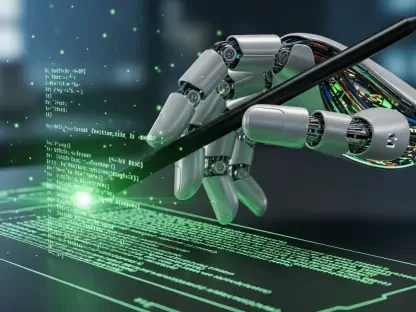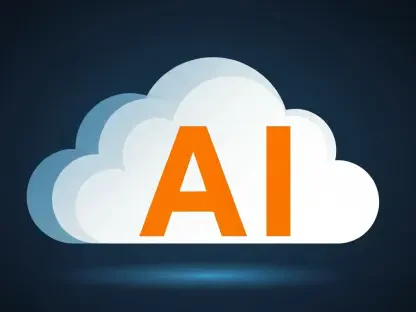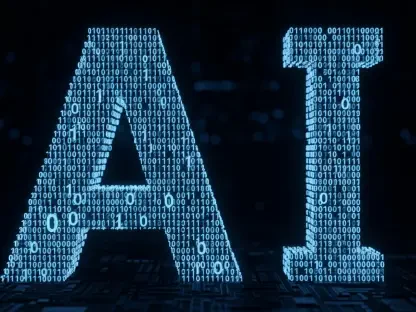Imagine a world where software deployment is no longer a battle against dependency conflicts and environmental mismatches, where applications run seamlessly from a developer’s laptop to a cloud server. This is the reality Docker has crafted since its inception, revolutionizing how industries approach software development and IT infrastructure. As a leading containerization platform, Docker has become synonymous with agility and consistency, empowering developers to build, ship, and run applications in isolated, portable environments. This review delves into the core of Docker’s technology, examining its features, real-world impact, and the challenges it faces in an ever-evolving tech landscape, with a particular focus on its transformative role in artificial intelligence (AI) and machine learning (ML).
Introduction to Docker Containerization
Docker stands as a pillar in modern software development, offering a solution to age-old problems of inconsistent environments and cumbersome deployments. At its essence, containerization encapsulates an application along with its dependencies, libraries, and configurations into a single, lightweight unit called a container. This approach ensures that software behaves identically whether in development, testing, or production, sidestepping issues like “it works on my machine” dilemmas that have long plagued IT teams.
The emergence of Docker addressed critical gaps in traditional deployment methods, where virtual machines often proved resource-heavy and slow. By leveraging operating system-level virtualization, Docker provides a leaner alternative, enabling rapid setup and teardown of environments. Its significance extends beyond mere convenience, playing a vital role in DevOps practices by fostering collaboration between development and operations teams through streamlined workflows.
Moreover, Docker’s relevance shines in the broader context of cloud computing, where scalability and flexibility are paramount. Its ability to integrate with major cloud providers and support hybrid architectures has made it indispensable for enterprises aiming to modernize their infrastructure. This foundation sets the stage for exploring how Docker’s technical prowess and adaptability drive innovation across diverse sectors.
Core Features and Technical Components of Docker
Container Isolation and Portability
One of Docker’s standout attributes lies in its ability to isolate applications within self-contained environments. Each container operates independently, bundling not just the application but also its runtime, system tools, and libraries. This isolation minimizes conflicts between applications sharing the same host, ensuring predictable performance whether on a local server or a remote cloud instance.
Portability further amplifies Docker’s appeal, allowing containers to run on virtually any hardware or architecture with a compatible kernel. From sprawling data centers to compact edge devices, developers can deploy applications without worrying about underlying system differences. This flexibility proves invaluable in scenarios requiring rapid migration or testing across varied setups, reducing time and effort significantly.
The impact of this portability is evident in industries pushing for innovation at scale. Containers enable consistent deployment pipelines, supporting everything from microservices in enterprise systems to real-time analytics on constrained hardware. Such versatility underscores why Docker has become a go-to solution for maintaining operational continuity across diverse environments.
Integration with Orchestration Tools
Docker’s strength multiplies when paired with orchestration platforms like Kubernetes and Amazon ECS/EKS, which manage and scale containerized workloads with precision. These tools handle tasks such as load balancing, service discovery, and automated recovery, making it possible to orchestrate hundreds or thousands of containers in distributed systems. This synergy is especially critical for resource-intensive applications like AI model training, where demand can spike unpredictably.
The performance benefits of this integration are substantial, particularly in handling complex, distributed architectures. Orchestration ensures high availability by dynamically reallocating resources and restarting failed containers, thus maintaining uptime even under stress. For industries relying on continuous data processing, such as financial trading platforms, this reliability translates into tangible business value.
Beyond raw performance, orchestration enhances Docker’s role in managing sprawling infrastructures. It simplifies the deployment of multi-container applications, coordinating dependencies and networking seamlessly. This capability allows organizations to focus on innovation rather than the intricacies of system management, cementing Docker’s position as a cornerstone of scalable technology solutions.
Recent Innovations and Industry Trends
Docker continues to evolve, with recent advancements pushing the boundaries of containerization. A notable development is the introduction of Docker AI, launched a couple of years ago, which automates infrastructure tasks through context-aware guidance. This tool assists developers in crafting Dockerfiles and debugging builds, addressing a significant portion of application development challenges beyond just coding.
Emerging trends also point to containerization’s expanding footprint in specialized domains like AI-as-a-service and serverless architectures. Docker’s lightweight design aligns perfectly with the need for modular, on-demand computing resources, facilitating rapid deployment of AI models in dynamic environments. Additionally, its adoption in decentralized computing reflects a shift toward distributed systems that prioritize resilience and local processing.
Industry behavior mirrors these technical strides, with a marked increase in demand for skills in Docker and Kubernetes. As companies across sectors integrate containerization into their workflows, proficiency in these technologies has become a sought-after asset in tech careers. This trend highlights Docker’s growing influence not just as a tool, but as a catalyst for professional and organizational transformation.
Real-World Applications and Use Cases
Docker’s practical impact spans a wide array of industries, demonstrating its versatility in solving real-world problems. In healthcare, for instance, containers enable portable solutions for respiratory disease detection in remote clinics, ensuring consistent performance despite limited infrastructure. Such applications underscore how Docker empowers critical services in underserved regions with reliable technology.
Industrial and agricultural sectors also benefit from Docker’s capabilities, particularly through edge AI implementations. Predictive maintenance systems in factories use containerized models to anticipate equipment failures, minimizing downtime. Similarly, in agriculture, drone-based crop monitoring leverages Docker’s lightweight containers to process data locally, optimizing resource use and enhancing yield predictions with real-time insights.
Cloud-based AI deployments further showcase Docker’s scalability, supporting large-scale inference and training tasks. Major tech firms rely on containerized environments to manage fluctuating workloads, ensuring models remain accessible and responsive. These examples illustrate how Docker bridges the gap between cutting-edge innovation and practical deployment, driving efficiency across diverse operational contexts.
Challenges and Limitations in Adoption
Despite its strengths, Docker faces notable hurdles in widespread adoption, particularly around managing container sprawl. As organizations scale their use of containers, keeping track of numerous instances can become unwieldy, leading to inefficiencies and potential security gaps. Addressing this requires robust monitoring and lifecycle management strategies to maintain order in complex deployments.
Security itself presents another significant challenge, especially in regulated industries like healthcare and finance. While containers offer isolation, vulnerabilities in images or misconfigurations can expose sensitive data. Ensuring compliance with stringent privacy laws adds another layer of complexity, often necessitating additional tools and expertise to safeguard deployments.
Efforts to overcome these limitations are underway, with advancements in vulnerability scanning and integration with secure enclaves showing promise. Enhanced security protocols aim to fortify container environments against threats, while community-driven best practices help mitigate risks. These ongoing developments are crucial for sustaining trust in Docker as a reliable platform for critical applications.
Future Outlook for Docker Technology
Looking ahead, Docker’s trajectory suggests deeper integration with AI advancements such as federated learning, where data privacy and distributed training are key. Containers are well-positioned to support these paradigms by encapsulating models and ensuring secure, localized processing. This alignment with privacy-preserving computation hints at Docker’s potential to shape next-generation AI frameworks.
Anticipated breakthroughs, including GPU-optimized runtimes, could further enhance Docker’s appeal for specialized workloads. Domain-specific containers tailored for unique use cases, such as real-time analytics or autonomous systems, may emerge as standard offerings. These innovations promise to streamline performance bottlenecks, making Docker even more integral to high-demand computing tasks.
The long-term impact of Docker on software development and IT infrastructure appears profound, particularly in emerging fields like edge intelligence. As systems increasingly rely on distributed, low-latency processing, Docker’s ability to deliver consistent, portable environments will likely become a foundational element. Its influence is poised to redefine how technology adapts to evolving computational needs over the coming years.
Final Thoughts and Recommendations
Reflecting on this comprehensive review, Docker proves to be a transformative force that redefines software consistency, scalability, and security. Its capacity to streamline complex workflows and support diverse applications, especially in AI and ML, marks a significant leap forward for developers and enterprises alike. The technology’s integration with orchestration tools and its adaptability to edge and cloud environments establish it as a linchpin in modern IT strategies.
Moving forward, organizations should prioritize investing in robust container management solutions to tackle challenges like sprawl and security vulnerabilities. Adopting advanced scanning tools and fostering a culture of best practices can bolster defenses against emerging threats. Additionally, upskilling teams in Docker and Kubernetes will be essential to harness the full potential of containerization in dynamic, competitive markets.
As the tech landscape continues to shift, exploring partnerships with cloud providers and AI innovators could unlock new avenues for leveraging Docker’s capabilities. Emphasizing modular, secure, and scalable designs in future projects will ensure resilience against evolving demands. Ultimately, Docker’s legacy as a foundational technology paves the way for actionable strategies that can drive sustained innovation and operational excellence.









